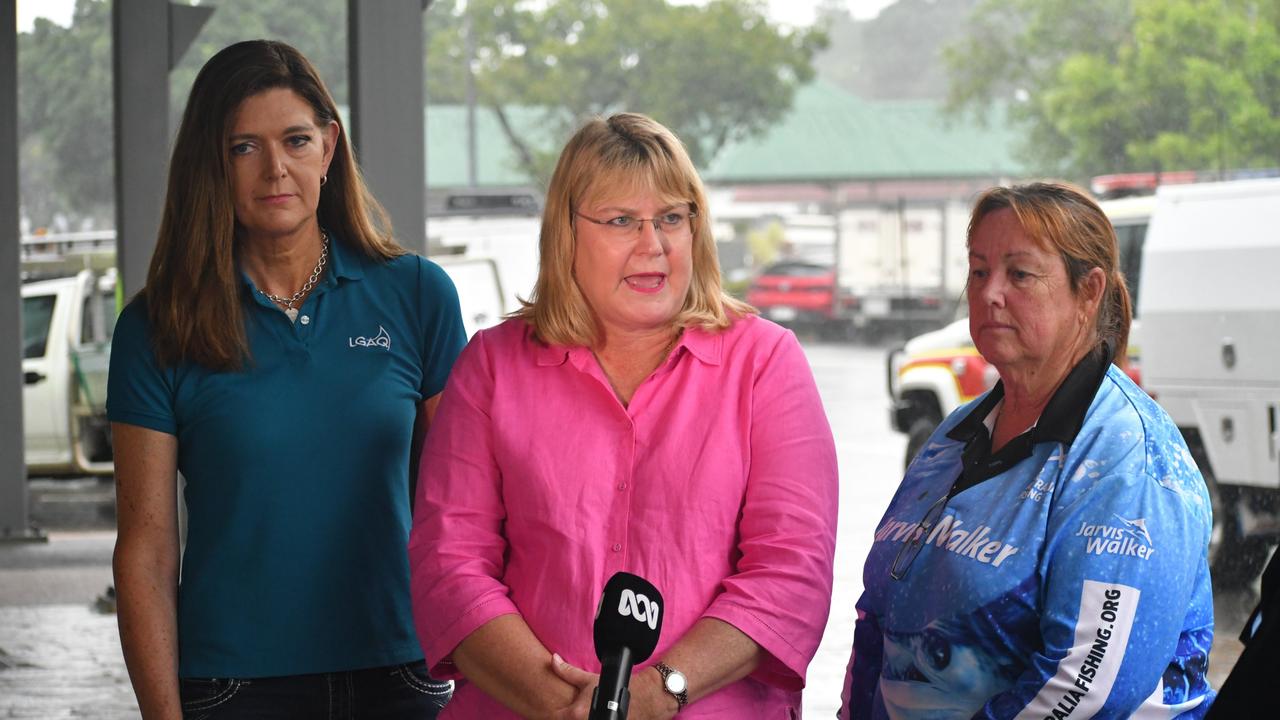Thick black mould sparks health concerns at Royal Brisbane and Women’s Hospital
Black mould remains in one of the state’s biggest hospital – bringing potentially lethal risks to patients – despite $2 million spent and a promise by Queensland Health to stamp out the spread.

QLD News
Don't miss out on the headlines from QLD News. Followed categories will be added to My News.
Nurses have raised the red flag over the persistent presence of black mould on the ceilings of the state’s biggest hospital and the potential lethal risks to patients — months after Queensland Health vowed to stamp out the spread.
In February The Courier-Mail provided Queensland Health with photographs of thick black mould near the bed of an elderly patient battling pneumonia in the Royal Brisbane and Women’s Hospital and another photo revealed a thick black fungal outbreak covering the airconditioning vent in a surgical recovery ward.
Queensland Health promised to remove all impacted ceiling tiles, blaming a spell of humid weather for the outbreak.
Metro North Hospital and Health Service insisted at the time that they had comprehensive strategies in place for the management of mould and the problem would be fixed within a week.

An extra $2m was allocated for a staggered mould remediation program at the hospital.
But now nursing staff report that the mould problem at the hospital is far from fixed and have released photos taken this month of various mouldy areas in the hospital to the Nurses Professional Association of Queensland.
“This is completely unacceptable in what should be a clinically clean environment. The real issue here is inadequate infrastructure maintenance in our major public hospitals,” NPAQ president Kara Thomas said.
“Under the EB11 Agreement, nurses have the right to notify concerns about serious workplace health and safety risks. We need comprehensive air quality testing, proper containment measures and a long-term prevention strategy to ensure the safety of both patients and healthcare workers,” she said.
Ms Thomas said nurses had genuine fears mould spores could spark serious respiratory problems for vulnerable patients.
“The public should know about the poor state of their taxpayer funded facilities. Management has known about mould and filth for years,” one of the nurses said.
Australian Medical Association Queensland president Nick Yim said he encouraged hospital staff to speak to their employer about any health and safety concerns.
“We understand that mould is a great challenge in Queensland climates and is typically managed well in sensitive environments like hospitals. That said, our health services contain some of our most vulnerable patients and we need to ensure we look after them,” he said.
“HHSs should have rigorous systems in place to control mould and take appropriate action against any danger to patient safety from mould related disease,” Dr Yim said.

A Metro North Health spokesman said South East Queensland’s weather and climate made mould an ongoing challenge for many building operators, including Metro North Health.
“Metro North Health takes the concerns of staff seriously, and earlier this year allocated additional funding to a rolling program of work to rectify mould issues at the RBWH and the Herston campus,” the spokesman said.
“Along with this rolling program of mould removal and remediation, as we approach the warmer summer months, additional cleaning will assist in further reducing the risk and incidence of mould.
“Our comprehensive strategies to manage mould include regular monitoring and maintenance, cleaning, air-testing, and HEPA filters for high-risk areas.
“Hospital staff are encouraged to report any issues, including mould, in their work areas to allow for appropriate actions to be taken.”




